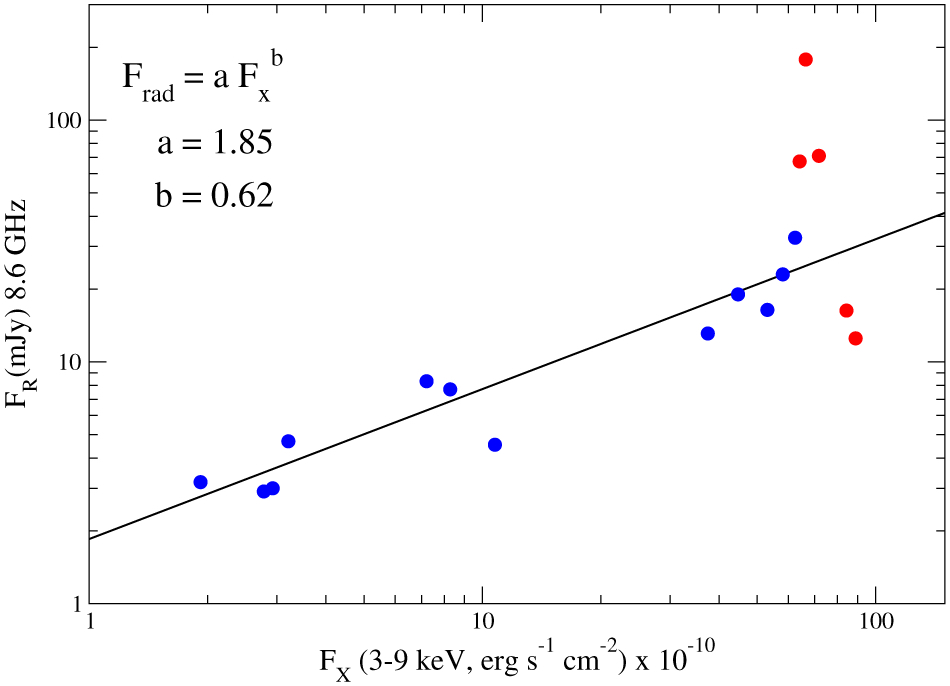The Radio – X-ray correlation in black-hole binaries
From their birth, the stars in our Galaxy are mostly in binaries. Our Sun is an exception. The more massive of the two stars in a binary evolves faster than the less massive one and ends its luminous life as a compact object: a white dwarf, a neutron star, or a black hole. In the last case, a black-hole binary (BHB) is formed. As the normal star in such a binary continues its evolution, matter escapes from its outer layers and it is attracted by the black hole. Because of angular momentum conservation, this attracted matter forms a disk around the black hole, which is called accretion disk. The inner part of this accretion disk (called hot inner flow) is very hot (millions of degrees) and could, in principle, be the source of X-rays.
Naively thinking, since black holes absorb everything, one would expect all the matter in the accretion disk to fall into the black hole because of friction, like the artificial satellites around Earth. However, what actually happens is that a significant fraction of the accreting matter is ejected in the form of a narrow jet or a wide outflow or both. This jet and/or outflow is detected via the radio waves that it emits.

It is known, for about 20 years now, that the observed radio luminosity from BHBs correlates very well with the observed X-ray luminosity (solid line in Fig. 1. The mathematical expression for the correlation is shown in the upper left corner of the Figure). This has puzzled the community, because the X-rays are thought to be emitted from the hot inner flow, the radio from the jet/outflow, and the two “do not talk to each other”. One possibility discussed in the community is that both the outflow and the hot inner flow are fed with the matter that is provided by the companion star and this correlates their emissions. When asked about it, Kylafis said: “if you and I fill the tanks of our cars from the same gas station, does this correlate us? Obviously not”.
The Group in Crete, consisting of Nick Kylafis, Pablo Reig, and Alexandros Tsouros, followed their intuition and proposed that, in order for the X-rays and the radio emission in BHBs to be correlated, the two emissions must come from the same region. Not that this is a guarantee, but at least there is a good chance. Thus, they assumed that the X-rays come from the outflow, which emits the radio waves and they were able to reproduce the observed correlation (see the blue dots in Fig. 1, which are the results of their model).
Since no model should be taken seriously unless it makes predictions which can be tested, the red dots in Fig. 1 are predictions of the model. The model predicts that, at high luminosity (both radio and X-ray), the correlation will break down (right part of Fig. 1) and the radio luminosity will first increase sharply and then decrease also sharply within a small range of X-ray luminosity (red dots). This sharp increase and decrease of the radio luminosity takes about five days, and no BHB has been caught in this stage so far, because observations of a particular BHB are done typically once a month or at best once a week (radio and X-ray telescopes are too busy). Thus, in order for the prediction to be confirmed or rejected, daily radio and X-ray observations are needed. Such observations are now planned.
Article: N.D. Kylafis, P. Reig, A. Tzouros, "A quantitative explanation of the radio – X-ray correlation in black-hole X-ray binaries", 2023, A&A, 679, A81
